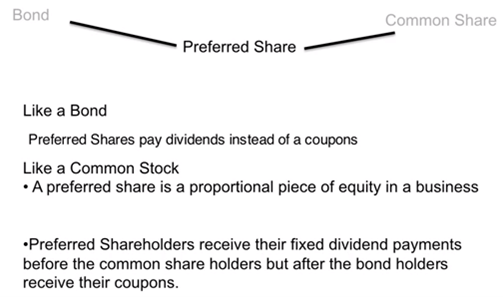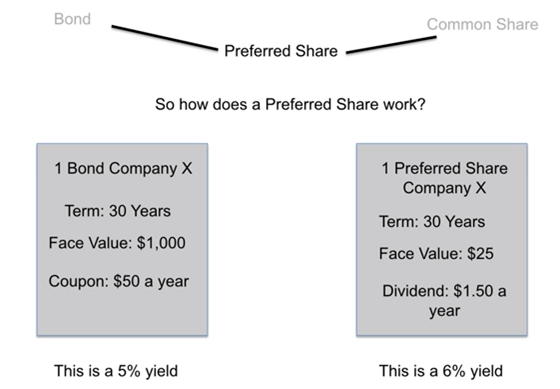Reading: Preferred Stock
Preferred
Stock
•A
preferred stock is a class of ownership in a corporation that has a higher
claim on its assets and earnings than common stock. Preferred shares generally
have a dividend that must be paid out before dividends to common shareholders,
and the shares usually do not carry voting rights.
•
•Preferred
stock combines features of debt, in that it pays fixed dividends, and equity,
in that it has the potential to appreciate in price. The details of each
preferred stock depend on the issue.
•Preferred
shares have less potential to appreciate in price than common stock, and they
usually trade within a few dollars of their issue price, most commonly $25.
Whether they trade at a discount or premium to the issue price depends on the
company's credit-worthiness and the specifics of the issue: for example,
whether the shares are cumulative, their priority relative to other issues, and
whether they are callable.
Callable
and Convertible Preferred Shares
•If
shares are callable, the issuer can purchase them back at par value after a set
date. If interest rates fall, for example, and the dividend yield does not have
to be as high to be attractive, the company may call its shares and issue
another series with a lower yield. Shares can continue to trade past their call
date if the company does not exercise this option.
•Some
preferred stock is convertible, meaning it can be exchanged for a given number
of common shares under certain circumstances. The board of directors might vote
to convert the stock, the investor might have the option to convert, or the
stock might have a specified date at which it automatically converts. Whether
this is advantageous to the investor depends on the market price of the common
stock.

What
is a Preferred Share

What
is a Preferred Share

Última modificación: martes, 14 de agosto de 2018, 08:49
